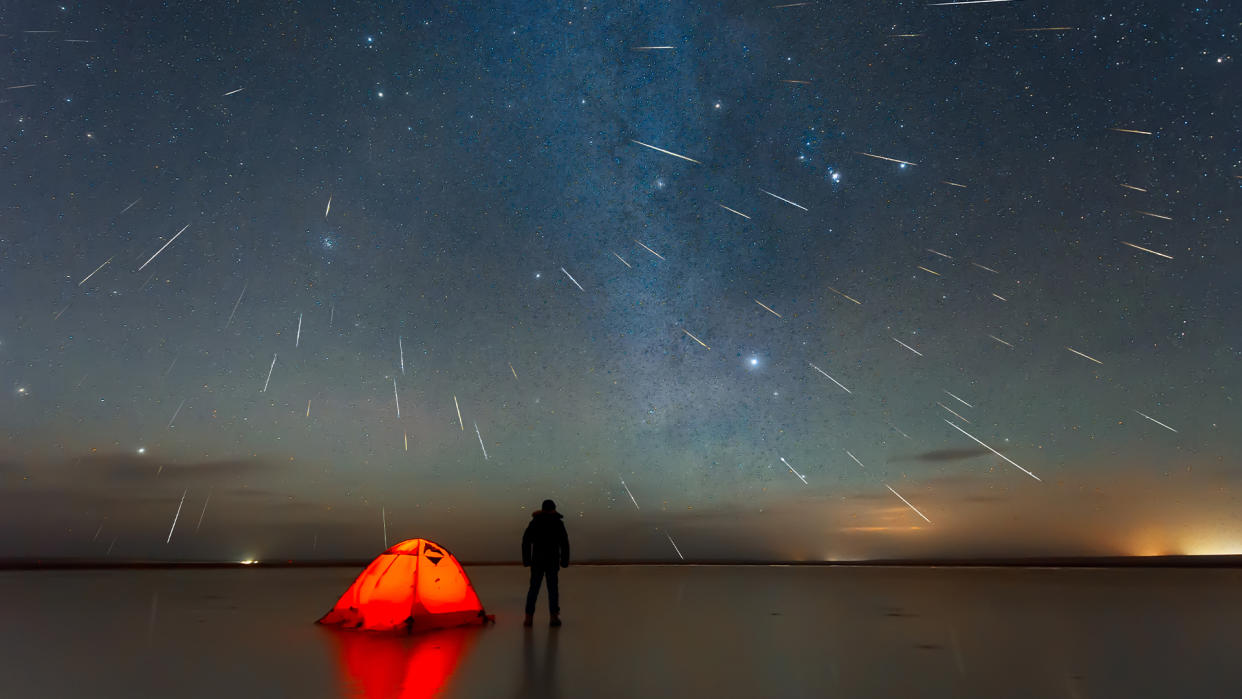The Geminids — this year's only multicolored meteor shower — peaks next week. Here's how to watch.

The Geminid meteor shower will peak on Dec. 13 and 14, with the moon absent from the night sky for what experts predict will be 2023's most prolific display of "shooting stars" in the Northern Hemisphere.
Active from Nov. 19 to Dec. 24 each year, the annual event is lesser known than August's dazzling Perseid meteor shower, perhaps because it takes place in much colder weather.
However, the Geminid meteor shower is one of the best displays of shooting stars of the year, with up to 120 meteors per hour predicted to be visible during the peak hours, according to the American Meteor Society. The Geminids' absolute peak is expected to hit at 8 p.m. EST on Dec. 13 (0100 GMT on Dec. 14).
Related: NASA's most wanted: The 5 most dangerous asteroids in the solar system
That's perfect timing for North America. For starters, a new moon on Dec. 13 will make for perfectly dark skies for the peak night of the Geminids. Additionally, the shower's radiant point — the area of the sky from which the meteors seem to appear, in this case the constellation Gemini — will be high above the horizon soon after dark. That means the best time to see the Geminids will be at the peak.
Geminid meteors are bright and fast, and they tend to be yellow, according to NASA. But they can also be white or green, making them the only multicolored display of shooting stars of the year.
The Geminids are also the only major meteor shower to be caused not by a comet, but by an asteroid. (Whereas comets are made of icy dust particles, asteroids are composed of rock.)
RELATED STORIES
—Strange yellow glass found in Libyan desert may have formed from lost meteor impact
—10 dazzling photos of the Perseid meteor shower, 2023
—Enormous fireball meteor turns the sky over Turkey green in eerie viral video
Shooting stars are generally caused by meteoroids left in Earth's orbital path. When meteoroids enter Earth's atmosphere at high speeds and burn up, they're called meteors. An asteroid named 3200 Phaethon, which orbits the sun every 1.4 years, is responsible for the Geminids. Measuring about 3.2 miles (5.1 kilometers) in diameter, the asteroid may have broken off of a comet, according to NASA, and it now forms a comet-like tail when it gets close to the sun, leaving meteoroids in the inner solar system. Its shooting stars travel at 21 miles per second (34 kilometers per second).
Meteor showers are best viewed with the naked eye. However, if you're thinking about getting into skywatching, now's a great time to pick out a pair of the best stargazing binoculars or invest in a good small telescope to be ready for the upcoming year of dazzling night sky phenomena.

